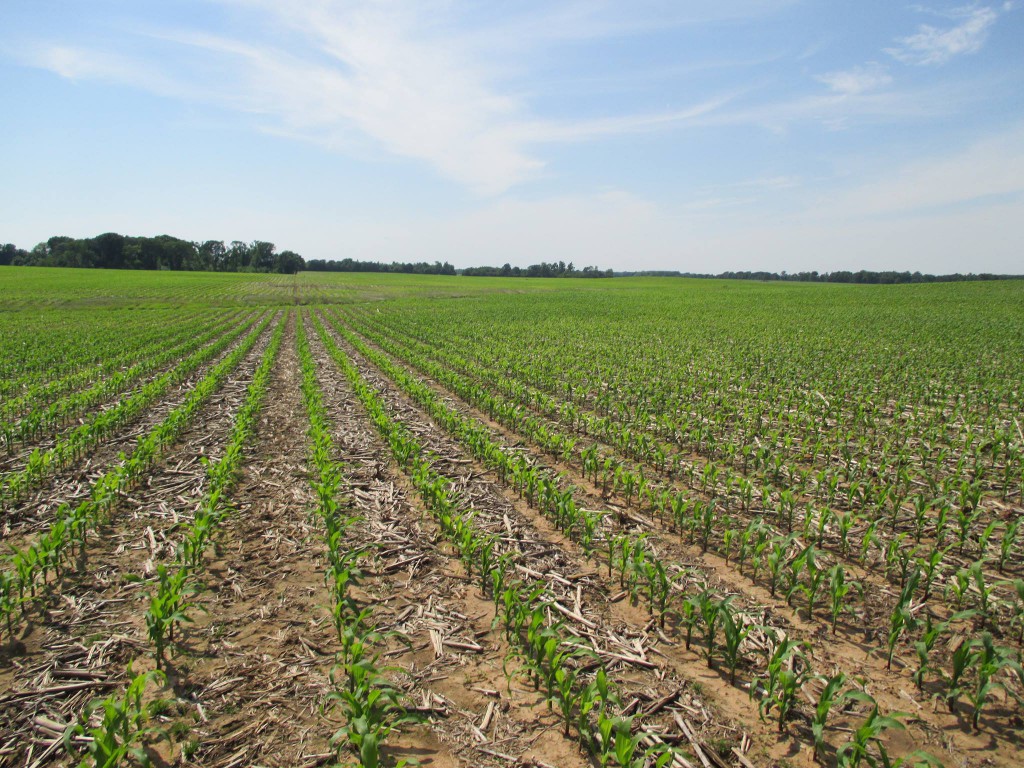Spinner-disc spreaders are common application equipment for broadcasting lime and dry fertilizer. Both pull-behind and large self-propelled spreaders are widely used by growers and co-ops in Georgia. One of the most common issues we always hear about them is the lack of uniform fertilizer distribution, which is hard to miss when you see streaked fields or pastures. Generally, most applicators do a good job of selecting the proper settings (gate height and conveyor speed through press wheel or rate controller) to apply the target application rate but more often overlook the settings that affects fertilizer distribution across the swath. The graph below illustrates that as an example where the mean rate (342 lbs/ac) for this fertilizer application is pretty close to the target application rate (350 lbs/ac) but the fertilizer distribution uniformity across the (70 feet) spread width is considerably poor (showed as solid blue line). This is also called a typical “W” pattern with a heavy center directly behind the spreader and two peaks towards the end of the swath.

So, two spreader settings that needs your attention and can be adjusted to correct fertilizer distribution issues:
Flow Divider Position: A flow divider is located at the end of the conveyor chain/belt and above the spinner-discs. Its function is to split the material evenly and control the material placement (location) onto the spinner-discs. The fertilizer distribution across the spread width is most sensitive to the position of the flow divider as a small change in flow divider position can result in a significant change in spread pattern i.e. a small change can make an undesirable spread pattern desirable or vice-versa. The flow divider position depends on the material being spread. The recommended setting in the spreader operator’s manual is usually a good place to start with but a spread pattern testing is highly recommended to adjust and determine the flow divider position that provides a more uniform fertilizer distribution behind the spreader.

Spinner Speed: Speed (rotations per minute) of the spinner-discs controls how far the fertilizer is being spread out (single pass spread width), which is used to determine the effective spread width (the actual application width). Low to medium spinner-disc speeds (600 – 700 rpm) are generally recommended for more uniform fertilizer distribution across the swath. However, application at higher spinner-disc speeds are also common among the applicators to spread wider and cover more acres. This results in non-uniform distribution as fertilizer properties (particle size and weight) impacts how it is being distributed behind the spreader i.e. larger and heavier particles travel farther whereas the smaller and light particles are mostly distributed close to or directly behind the spreader. This is one of the primary reasons for fertilizer segregation during broadcast application of blended fertilizers. Additionally, larger but fragile fertilizer particles breaks easily on contact with spinner-discs rotating at higher speeds and create lot of fines directly behind the spreader. Most of these issues (related to uneven distribution and segregation) can be easily corrected by operating spinner-discs at recommended lower speeds. A quick calibration procedure to verify the actual spinner-disc speed (using a handheld tach) and the desired effective spread width (through spread pattern testing) is again advised to attain a more uniform fertilizer distribution.

While consideration to other spreader settings and spreader operation is also important for uniform fertilizer application, in my opinion these two settings are on the top of the list to check and make any necessary adjustments.
